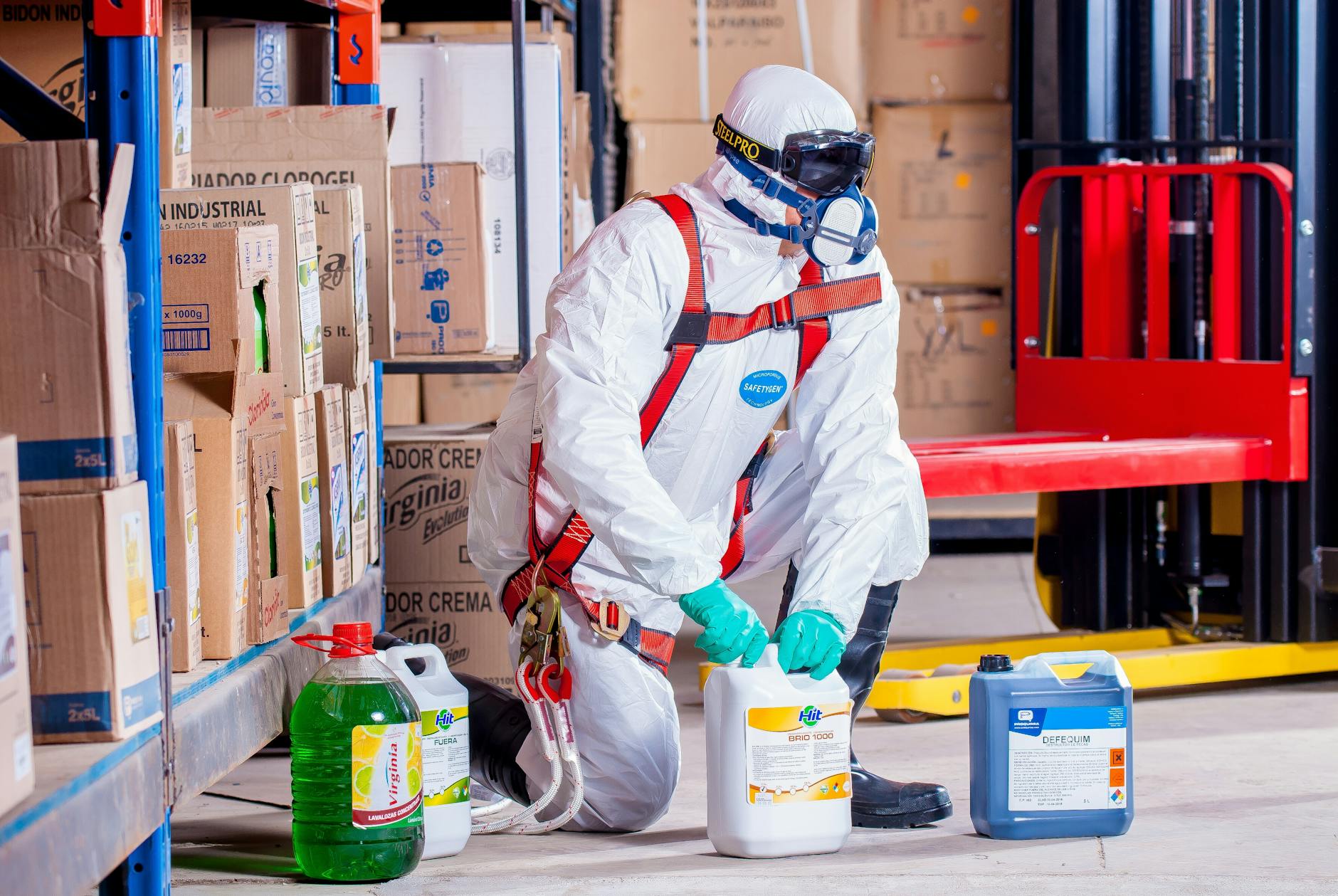Transitioning to slow fashion: your guide to an eco-friendly wardrobe for 2025
W dzisiejszym świecie, gdzie moda zmienia się z dnia na dzień, coraz więcej osób zwraca uwagę na ekologiczną stronę wyborów konsumenckich. Przemysł modowy, szczególnie szybka moda, od lat jest krytykowany za swój negatywny wpływ na środowisko. Dlatego też coraz więcej osób zaczyna interesować się koncepcją slow fashion, która stawia na jakość, trwałość i zrównoważony rozwój. Przejście na slow fashion to nie tylko modny trend, ale przede wszystkim odpowiedzialny wybór, który może przyczynić się do ochrony naszej planety. W tym artykule omówimy, jak stworzyć ekologicznie świadomą garderobę na 2025 rok, jak praktykować slow fashion i jakie korzyści płyną z tego podejścia.

Slow fashion to podejście, które przeciwstawia się szybkiemu konsumpcjonizmowi i zachęca do bardziej świadomego i przemyślanego podejścia do mody. To nie tylko moda, ale styl życia, który promuje kupowanie mniej, ale lepszej jakości ubrań, które przetrwają lata. W kontekście rosnących obaw związanych z zanieczyszczeniem środowiska i zmianami klimatycznymi, slow fashion przyciąga coraz większą uwagę jako sposób na zredukowanie negatywnego wpływu przemysłu odzieżowego na planetę.
Tworzenie ekologicznie świadomej garderoby wymaga pewnych zmian w podejściu do zakupów, a także w sposobie, w jaki pielęgnujemy nasze ubrania. Wymaga to również zmiany mentalności z „więcej znaczy lepiej” na „mniej, ale lepiej”. Dlatego ważne jest, aby poznać zasady slow fashion i wprowadzić je do swojego życia codziennego.
W niniejszym przewodniku omówimy, jak krok po kroku przejść do slow fashion, jakie korzyści płyną z tego podejścia oraz jak praktykować zrównoważoną modę w praktyce. Pokażemy również, jak wybierać ubrania, które są nie tylko stylowe, ale także przyjazne dla środowiska.
Przygotuj się na podróż w świat ekologicznej mody, która pomoże Ci stworzyć garderobę na miarę przyszłości. Zrozumiesz, jak Twoje wybory mogą przyczynić się do ochrony naszej planety, a jednocześnie pozwolą Ci wyrazić swoją indywidualność poprzez styl.
Czym jest slow fashion?
Slow fashion to koncepcja, która narodziła się jako odpowiedź na coraz szybsze tempo produkcji i konsumpcji odzieży w ramach tzw. szybkiej mody. W przeciwieństwie do niej, slow fashion koncentruje się na jakości, trwałości i zrównoważonym rozwoju. Oznacza to, że ubrania produkowane są w sposób bardziej przyjazny dla środowiska, z użyciem ekologicznych materiałów i z poszanowaniem praw pracowników.
Podstawą slow fashion jest świadome podejście do zakupów – decydując się na zakup nowej odzieży, zwracamy uwagę na jej jakość, pochodzenie oraz wpływ na środowisko. Ubrania z tej kategorii są zazwyczaj droższe, ale ich wyższa jakość sprawia, że służą nam znacznie dłużej niż tanie produkty z sieciówek. To podejście również zachęca do naprawy i pielęgnacji odzieży, zamiast jej szybkiego wyrzucania.
Praktykowanie slow fashion to także wspieranie lokalnych producentów, którzy często stawiają na tradycyjne metody produkcji i współpracę z rzemieślnikami. Dzięki temu nie tylko zyskujemy unikalne produkty, ale również przyczyniamy się do rozwoju lokalnych społeczności.
Jak zacząć swoją przygodę ze slow fashion?
Rozpoczęcie przygody ze slow fashion może wydawać się wyzwaniem, zwłaszcza dla osób przyzwyczajonych do szybkiego tempa zakupów w sieciówkach. Pierwszym krokiem jest dokładne przeanalizowanie swojej garderoby. Zastanów się, które ubrania nosisz najczęściej, a które kurzą się w szafie. Dzięki temu zrozumiesz swoje preferencje i łatwiej będzie Ci dokonywać świadomych wyborów w przyszłości.
Ważnym elementem slow fashion jest również nauka dbania o ubrania. Stosowanie odpowiednich środków do prania, unikanie suszenia w suszarce bębnowej czy też regularne naprawy mogą znacznie przedłużyć życie Twojej odzieży. Pamiętaj, że zakup nowego ubrania powinien być dobrze przemyślany – zamiast kupować impulsywnie, zastanów się, czy dany produkt rzeczywiście jest Ci potrzebny i czy pasuje do reszty Twojej garderoby.
Dzięki takim działaniom nie tylko zaoszczędzisz pieniądze, ale również przyczynisz się do redukcji odpadów tekstylnych, które stanowią ogromne obciążenie dla środowiska. Warto również zainwestować w ubrania wykonane z ekologicznych materiałów, takich jak organiczna bawełna, len czy wełna z certyfikatem zrównoważonego rozwoju.
Korzyści płynące z wyboru slow fashion
Wybierając slow fashion, nie tylko wspierasz środowisko, ale także zyskujesz wiele korzyści osobistych. Po pierwsze, ubrania wykonane z wysokiej jakości materiałów są znacznie bardziej komfortowe w noszeniu i trwalsze. Dzięki temu możesz cieszyć się swoją garderobą przez dłuższy czas, bez konieczności częstego kupowania nowych rzeczy.
Slow fashion to także unikalne wzory i fasony, które pozwalają Ci wyrazić swoją indywidualność. W przeciwieństwie do masowo produkowanej odzieży z sieciówek, ubrania z tej kategorii często pochodzą z limitowanych kolekcji, co sprawia, że są jedyne w swoim rodzaju. Wspierając lokalnych rzemieślników, zyskujesz nie tylko piękne ubrania, ale także satysfakcję z pomocy w rozwoju lokalnych społeczności.
Kolejnym atutem slow fashion jest możliwość wpływu na pozytywne zmiany w przemyśle modowym. Wybierając zrównoważoną modę, pokazujesz, że zależy Ci na losie naszej planety i że nie jesteś obojętny na kwestie związane z ochroną środowiska. Twoje wybory mogą inspirować innych do podjęcia podobnych działań, co w dłuższej perspektywie może przyczynić się do zmiany nawyków konsumenckich na większą skalę.
Praktyczne porady na temat slow fashion
Praktykowanie slow fashion wymaga zmiany podejścia do zakupów i pielęgnacji odzieży. Oto kilka praktycznych porad, które pomogą Ci wprowadzić tę koncepcję do swojego życia:
- Zwracaj uwagę na metki: Wybieraj ubrania wykonane z naturalnych, ekologicznych materiałów, takich jak organiczna bawełna, len czy wełna.
- Naprawiaj zamiast wyrzucać: Naucz się podstawowych napraw krawieckich, takich jak przyszywanie guzików czy łatanie dziur.
- Inwestuj w klasyki: Zamiast podążać za krótkotrwałymi trendami, wybieraj ponadczasowe fasony, które nigdy nie wychodzą z mody.
- Dbaj o ubrania: Stosuj delikatne środki piorące, pierz w niskich temperaturach i susz na powietrzu, aby przedłużyć żywotność odzieży.
- Wspieraj lokalnych producentów: Wybieraj ubrania od lokalnych projektantów i rzemieślników, aby wspierać rozwój lokalnych społeczności.
Przykłady udanych wdrożeń slow fashion
Wiele znanych marek i projektantów zaczyna wdrażać zasady slow fashion w swoje kolekcje, tworząc ubrania, które są zarówno stylowe, jak i przyjazne dla środowiska. Przykładem może być marka Patagonia, która od lat stawia na zrównoważony rozwój, używając materiałów z recyklingu i inwestując w ekologiczne technologie produkcji.
Innym przykładem jest Eileen Fisher, która od lat promuje minimalizm i trwałość w modzie, tworząc ubrania z ekologicznych materiałów i zachęcając klientów do zwracania starych ubrań w celu ich recyklingu. Dzięki takim działaniom marki te stają się liderami w dziedzinie zrównoważonej mody i inspirują innych do podejmowania podobnych kroków.
W Polsce również można znaleźć przykłady firm, które stawiają na slow fashion. Przykładem może być marka Elementy, która produkuje ubrania z certyfikowanych materiałów, a także propaguje ideę transparentności w produkcji, udostępniając klientom informacje na temat kosztów produkcji i pochodzenia materiałów.
Jak wybierać zrównoważone marki?
Wybieranie zrównoważonych marek może być trudne, zwłaszcza w dobie greenwashingu, kiedy to firmy nie zawsze są szczere co do swoich praktyk ekologicznych. Dlatego ważne jest, aby dokładnie analizować informacje dostępne na temat danego producenta i jego produktów.
Przede wszystkim warto szukać certyfikatów, które potwierdzają ekologiczne pochodzenie materiałów i zrównoważone praktyki produkcyjne. Przykładem takich certyfikatów może być GOTS (Global Organic Textile Standard) dla bawełny organicznej czy też Fair Trade, który potwierdza uczciwe warunki pracy dla pracowników.
Dobrym pomysłem jest również śledzenie rankingów i recenzji zrównoważonych marek, które są dostępne w internecie. Wielu blogerów i organizacji ekologicznych regularnie publikuje listy najlepszych producentów, które mogą być pomocne przy dokonywaniu zakupów.
Znaczenie edukacji i świadomości w slow fashion
Edukacja i świadomość konsumencka odgrywają kluczową rolę w promowaniu slow fashion. Wiedza na temat wpływu przemysłu modowego na środowisko i warunki pracy w fabrykach tekstylnych może być motywacją do zmiany nawyków zakupowych. Dzięki edukacji konsumenci są w stanie podejmować bardziej świadome decyzje i wybierać produkty, które są zgodne z ich wartościami.
Warto korzystać z dostępnych źródeł informacji, takich jak książki, dokumenty i artykuły na temat zrównoważonej mody. Uczestnictwo w warsztatach i spotkaniach poświęconych slow fashion również może dostarczyć cennych informacji i inspiracji do wprowadzenia zmian w swoim życiu.
Świadomość konsumencka może również przyczynić się do wywierania presji na producentów, aby ci zmieniali swoje praktyki na bardziej ekologiczne. Im więcej osób będzie domagać się zrównoważonych produktów, tym większe szanse na pozytywne zmiany w przemyśle modowym.
Jak slow fashion wpływa na przyszłość mody?
Slow fashion ma potencjał, aby znacząco zmienić przyszłość przemysłu modowego. Dzięki rosnącej świadomości konsumentów i ich rosnącemu zainteresowaniu zrównoważonymi produktami, marki są coraz bardziej zmuszone do wprowadzania ekologicznych praktyk produkcyjnych.
W przyszłości slow fashion może stać się normą, a nie wyjątkiem. Coraz więcej firm inwestuje w technologie, które minimalizują wpływ produkcji na środowisko, takie jak recykling materiałów czy też wykorzystanie energii odnawialnej. Dzięki temu, moda może stać się bardziej przyjazna dla planety, a jednocześnie oferować produkty wysokiej jakości, które są trwałe i stylowe.
Przyszłość mody to także większa transparentność i zaufanie. Konsumenci coraz częściej oczekują od marek otwartości w kwestii pochodzenia materiałów i warunków produkcji, co może przyczynić się do pozytywnych zmian w całym przemyśle.
FAQ
Co to jest fast fashion?
Fast fashion to termin określający podejście do mody, które polega na szybkim produkowaniu dużych ilości odzieży, zazwyczaj niskiej jakości, w odpowiedzi na najnowsze trendy. Takie ubrania są często tanie, co zachęca konsumentów do częstych zakupów, ale jednocześnie generuje ogromną ilość odpadów tekstylnych i negatywnie wpływa na środowisko. W przeciwieństwie do slow fashion, fast fashion skupia się na ilości, a nie jakości, co prowadzi do krótkiej żywotności produktów.
Dlaczego slow fashion jest ważne?
Slow fashion jest ważne, ponieważ promuje zrównoważone podejście do produkcji i konsumpcji odzieży. Dzięki temu ogranicza się negatywny wpływ przemysłu modowego na środowisko, w tym emisję CO2, zużycie wody oraz generację odpadów. Slow fashion wspiera również uczciwe warunki pracy dla pracowników w fabrykach tekstylnych oraz promuje jakość i trwałość produktów. Wybór slow fashion to także inwestycja w ubrania, które są bardziej komfortowe i stylowe, co przekłada się na większą satysfakcję konsumentów.
Jak rozpoznać marki slow fashion?
Marki slow fashion często charakteryzują się transparentnością w kwestii produkcji, używaniem ekologicznych materiałów oraz certyfikatami potwierdzającymi zrównoważone praktyki. Szukaj informacji na temat pochodzenia materiałów, warunków pracy w fabrykach oraz ekologicznych inicjatyw podejmowanych przez markę. Dobrze jest również sprawdzić recenzje i rankingi zrównoważonych producentów, które mogą pomóc w dokonaniu świadomego wyboru.
Czy slow fashion jest drogie?
Na pierwszy rzut oka slow fashion może wydawać się droższe niż fast fashion, jednak warto pamiętać, że jest to inwestycja w jakość i trwałość. Ubrania z tej kategorii są wykonane z lepszych materiałów i z większą dbałością o szczegóły, co sprawia, że służą nam znacznie dłużej. W dłuższej perspektywie może się to okazać bardziej ekonomiczne, ponieważ nie musimy często kupować nowych rzeczy. Warto również zwrócić uwagę na alternatywne źródła slow fashion, takie jak second-hand czy lokalne targi mody.
Jakie materiały są najbardziej ekologiczne?
Najbardziej ekologiczne materiały to te, które są naturalne, biodegradowalne i pozyskiwane w sposób zrównoważony. Przykłady to organiczna bawełna, len, konopie, wełna z certyfikatem zrównoważonego rozwoju oraz materiały z recyklingu, takie jak poliester z recyklingu czy Tencel. Ważne jest, aby zwracać uwagę na certyfikaty, które potwierdzają ekologiczne pochodzenie materiałów, takie jak GOTS czy Fair Trade. Wybierając te materiały, przyczyniamy się do zmniejszenia negatywnego wpływu na środowisko.
Czy slow fashion jest dostępne dla każdego?
Slow fashion jest dostępne dla każdego, choć może wymagać zmiany nawyków zakupowych i inwestycji w wyższą jakość. Alternatywą dla drogich nowych ubrań są second-hand, gdzie można znaleźć unikalne i wysokiej jakości produkty w przystępnych cenach. Warto również wspierać lokalnych projektantów i rzemieślników, którzy często oferują produkty w bardziej przyjaznych cenach. Kluczem jest przemyślane podejście do zakupów i wybieranie jakości nad ilość.
Jak slow fashion wpływa na lokalne społeczności?
Slow fashion wpływa korzystnie na lokalne społeczności, wspierając rzemieślników i małe przedsiębiorstwa, które stawiają na jakość i zrównoważony rozwój. Dzięki temu lokalne społeczności mogą się rozwijać, a ich członkowie mają możliwość pracy w godnych warunkach. Wybierając lokalne marki, przyczyniamy się do wzrostu gospodarczego regionu i promujemy tradycyjne metody produkcji, które są bardziej przyjazne dla środowiska.
Jak dbać o ubrania w duchu slow fashion?
Dbając o ubrania w duchu slow fashion, przedłużamy ich żywotność i zmniejszamy konieczność częstego kupowania nowych rzeczy. Kluczowe jest stosowanie delikatnych środków piorących, pranie w niskich temperaturach i unikanie suszenia w suszarce bębnowej. Warto również naprawiać uszkodzenia, takie jak dziury czy odpadnięte guziki, zamiast wyrzucać całe ubranie. Przechowywanie odzieży w odpowiednich warunkach, z dala od wilgoci i światła słonecznego, również może znacząco wpłynąć na jej trwałość.
Podsumowanie
Przejście na slow fashion to krok w kierunku bardziej zrównoważonego i odpowiedzialnego stylu życia. Dzięki świadomym wyborom możemy znacząco zmniejszyć negatywny wpływ przemysłu modowego na środowisko, jednocześnie ciesząc się wysokiej jakości, trwałymi produktami. Slow fashion to także inwestycja w unikalne i stylowe ubrania, które pozwalają wyrazić swoją indywidualność.
Warto pamiętać, że slow fashion to nie tylko moda, ale także styl życia, który promuje świadome podejście do konsumpcji i dbałość o naszą planetę. Wspieranie lokalnych producentów, wybieranie ekologicznych materiałów i edukacja na temat zrównoważonego rozwoju mogą przyczynić się do pozytywnych zmian w przemyśle modowym.
Przyszłość mody należy do slow fashion, które ma potencjał, aby stać się normą w nadchodzących latach. Dzięki rosnącej świadomości konsumentów i ich rosnącemu zainteresowaniu ekologicznie odpowiedzialnymi produktami, możemy wspólnie przyczynić się do ochrony naszej planety dla przyszłych pokoleń.















